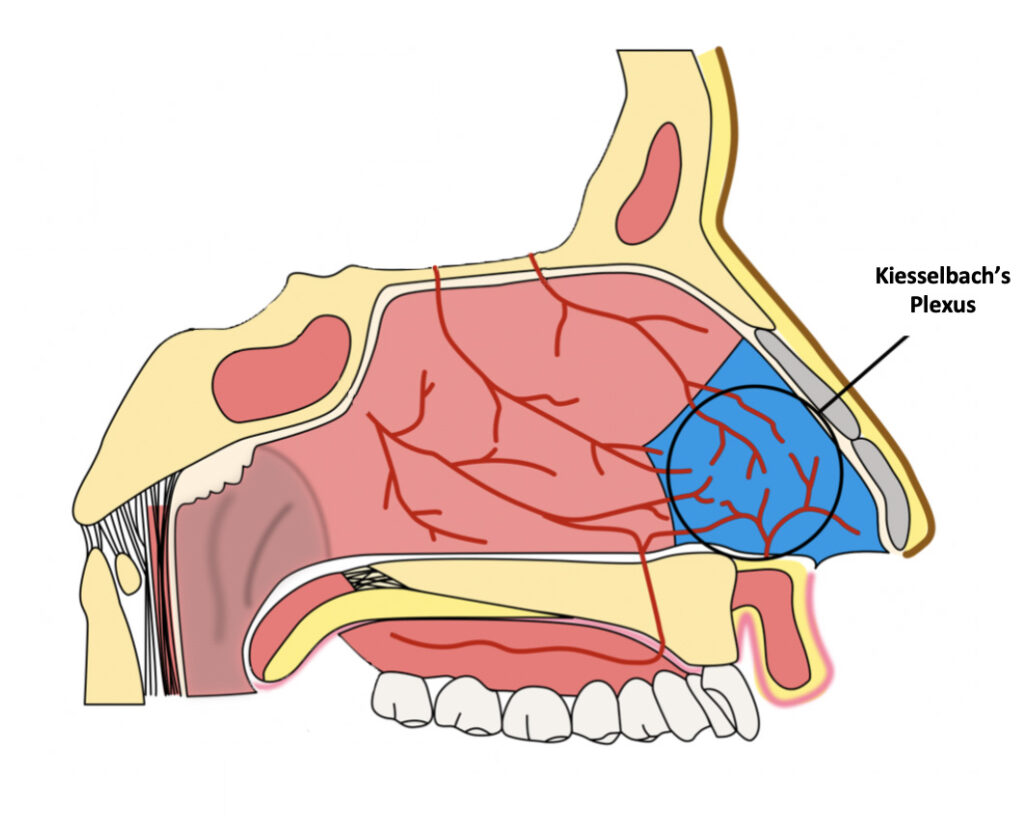
Nosebleeds are common in childhood and usually aren’t cause for serious concern. Most nosebleeds (also called epistaxis) are minor and can be stopped with direct pressure by pinching the front of the nose together for 5 to 10 minutes. The most common area in the nose that causes nosebleeds is called the Kiesselbach’s plexus. It is located near the front of the nose or septum (pictured below).

What causes a nosebleed?
There are many possible causes but the most common ones we encounter are:
- Trauma: nose picking is the most common
- Allergies: chronic inflammation
- Colds: acute inflammation from a respiratory virus
- Dried nasal membranes: from warm, dry air, especially during the wintertime with indoor heating systems
- Foreign body: such as beads, popcorn kernels, toilet paper, foam, etc.
Less common causes are:
- Nose polyps or tumors
- Bleeding disorders such as Hemophilia
- Low platelet counts
How do you stop a nosebleed?
- Stay calm.
- Sit up and lean forward slightly to prevent blood from running down your throat. Avoid lying flat or putting your head between your legs.
- Breathe through your mouth.
- Using a tissue, pinch the soft part of your nose under the bony ridge and apply continuous pressure for at least 5 minutes.
- Check to see if the bleeding has subsided. If not, continue squeezing the nose for an additional 10 minutes.
An ice pack applied to the “bridge” of the nose (the bony section) can also help constrict blood vessels and slow bleeding if desired.
When should you call us?
- Duration: Any nosebleed lasting longer than 15 to 20 minutes with pressure.
- Frequency: Nose bleeds that are more than 3 to 4 times per week or daily.
- Bleeding from both nares/nostrils at the same time. This is concerning for bleeding deeper in the nose, past the septum
- Other symptoms such as easy bruising, prolonged bleeding after a cut/injury, bleeding gums with brushing teeth, or unusual rashes warrant a visit with your child’s pediatrician.
If your child has any of the above symptoms, please call our office for a complete exam with your child’s pediatrician and to discuss whether your child needs further testing or if a referral to an ENT (Ear, Nose, Throat) specialist is appropriate. In the meantime, treatments you can try at home are daily nasal saline mist or applying Vaseline with a cotton swab just inside the septum walls.
Related Stories



